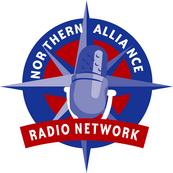More on the Humvee
Writing at National Review Online today, W. Thomas Smith Jr. has a column examining in some detail the reasons why the US has been slow to find a suitable replacement for the Humvee, a vehicle ill-suited to the combat environment in Iraq.
He makes valid points. One of his main points is that large-scale procurements of new weapon systems or vehicles are lengthy processes. He cites the F-22 Raptor (20 years from conception to deployment) and the M1 tank (24 years).
However, he does seem to undercut his own analysis by citing two examples of much more rapid development.
And this one, which I wrote about here:
In other words, he cites two examples where each was up and running within two years.
If the US government, with all its resources, were serious, really serious, about developing a new vehicle to replace the Humvee once its deficiencies were glaringly obvious, couldn't this country have moved mountains to build a new vehicle by now?
Why is the initiative being driven by private firms?
He makes valid points. One of his main points is that large-scale procurements of new weapon systems or vehicles are lengthy processes. He cites the F-22 Raptor (20 years from conception to deployment) and the M1 tank (24 years).
However, he does seem to undercut his own analysis by citing two examples of much more rapid development.
Earlier this month, I became the first journalist to ride in the prototype vehicle for what may well be the replacement for the up-armored Humvee. The prototype vehicle is known as the Mine-protected Utility Vehicle/Rapid Deployable (MUV-R). Earlier names included "Lion," that name was scrapped because, as Joynt says, the King of Swaziland's armored vehicle was christened, "Lion." The next name was "Kodiak," but Chevrolet was first with that moniker.
The MUV-R's manufacturer, South Carolina-based Force Protection, is currently producing much-larger mine-and-blast protective vehicles — the Buffalo and the Cougar — which are already in service with U.S. forces in Iraq. The Buffalo, which CBS News' Bob Schieffer called a "Humvee on steroids," is a mine-clearance vehicle. The Cougar is a troop transport, but geared for the same market that the M113 armored personnel carrier would be. Not a Humvee.
Therein lies the problem.
"The Humvee is a glorified jeep," says Blount. But the Army and Marines are now using the Humvee for a purpose for which it was never intended.
So it's not so much a question of replacing the Humvee, as much as it is developing a brand new armored vehicle with the same speed, climb, and general off-road performance capabilities of a Humvee.
That may well be the MUV-R, and that vehicle could be on the ground and running in the fourth quarter of 2006, a phenomenal feat considering the concept was realized one year ago. And vehicles weren't initially slated to roll of the line until 2007.
And this one, which I wrote about here:
Force Protection is not the only manufacturer of mine-and-blast protective troop transport vehicles. Other manufacturers, include General Dynamics (currently producing the RG-31 in South Africa), Krauss-Maffei Wegmann and Textron Systems (producing Germany's Dingo 2), and Kuwait-based Granite Global Services.
The latter was founded by U.S. Navy SEAL Reservist Chris Berman, who was working as a Blackwater USA security officer in March 2004 when four of his Blackwater buddies in thin-skinned SUVs were ambushed and killed in Fallujah. After escorting home the body of his close friend, Scott Helvenston, Berman committed to building a vehicle that would save lives. Today his new guns-bristling armored vehicle, "The Rock," is in service with both private contractors and DoD agencies.
In other words, he cites two examples where each was up and running within two years.
If the US government, with all its resources, were serious, really serious, about developing a new vehicle to replace the Humvee once its deficiencies were glaringly obvious, couldn't this country have moved mountains to build a new vehicle by now?
Why is the initiative being driven by private firms?








0 Comments:
Post a Comment
<< Home